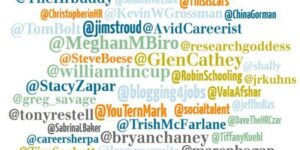
Pay Equity: A New Requirement for HR
New state and local laws addressing pay equity make salary disclosure illegal. Does your company know how to navigate these new policies?

New state and local laws addressing pay equity make salary disclosure illegal. Does your company know how to navigate these new policies?
Every part of the hiring process counts, but a face-to-face meeting is the best opportunity to dazzle the boss and land a coveted offer. To maximize

If you want to know how people can contribute to your company, why not take a test drive? Wordpress co-founder Matt Mullenweg explains

What does it take to develop a great corporate culture? China Gorman shares ideas as she prepares to announce the 2014 “Best Companies To Work For” List

What does it take to influence others on social media? An analysis of top recruiting influencers reveals some helpful answers

How can employers map out a more effective internship program? This infographic offers insights from student employment data…
In the national discussion on jobs, the plight of underemployed workers and unlucky job seekers captures the lead. If you’re lucky enough to live and work in Massachusetts, the story is more upbeat…